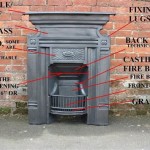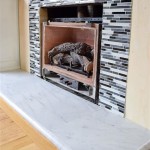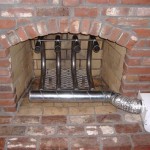Gas Fireplace Insert Troubleshooting: A Comprehensive Guide
Gas fireplace inserts provide an efficient and aesthetically pleasing heating solution for many homes. However, like any mechanical appliance, they can occasionally experience issues. A proactive approach to troubleshooting can often resolve minor problems, saving time and expense associated with professional repairs. This article provides a structured approach to diagnosing and resolving common issues with gas fireplace inserts.
Pilot Light Problems: Ignition and Flame Stability
The pilot light serves as the ignition source for the main burner in a gas fireplace insert. Problems with the pilot light are among the most frequent issues encountered. A pilot light that fails to ignite, won't stay lit, or burns with an unstable flame requires investigation.
Several factors can prevent the pilot light from igniting. A depleted or inadequately filled propane tank, if the insert uses propane, is a primary suspect. Verify the fuel supply and refill or replace the tank as needed. For natural gas units, confirm that gas service to the house is active and that other gas appliances are operating correctly. A closed shut-off valve along the gas line to the fireplace insert will also prevent the pilot light from igniting; ensure the valve is fully open.
Another common cause is a blocked pilot light orifice. Dust, debris, or even spiderwebs can accumulate in the small opening, restricting gas flow. Carefully clean the orifice using a thin wire or specialized pilot cleaning tool. Exercise caution to avoid enlarging the orifice or damaging the pilot assembly. Refer to the manufacturer's instructions for specific procedures and recommended cleaning methods.
A faulty thermocouple or thermopile is a likely culprit if the pilot light ignites but fails to stay lit. These safety devices generate a small electrical current that keeps the gas valve open. If the thermocouple or thermopile is damaged or corroded, it may not produce sufficient current, causing the gas valve to close and extinguish the pilot light. A multimeter can be used to test the output of the thermocouple or thermopile. If the reading is below the manufacturer's specified minimum, replace the faulty component.
Draft issues can also affect pilot light stability. Excessive drafts can blow out the pilot light or cause it to burn erratically. Check for open windows, doors, or other sources of drafts near the fireplace insert. Ensure that the venting system is properly installed and functioning correctly. A blocked or improperly sized vent can create negative pressure, drawing air into the fireplace and disrupting the pilot flame. Inspect the vent for obstructions and consult with a qualified technician if vent issues are suspected.
Main Burner Ignition Failures
After the pilot light is lit, the main burner should ignite when the fireplace insert is activated. If the main burner fails to ignite, several possible causes should be investigated.
A malfunctioning igniter is a common reason for main burner ignition failure. Many gas fireplace inserts use a spark igniter or a hot surface igniter to ignite the gas flowing to the main burner. If the igniter is not producing a spark or glowing sufficiently, the gas will not ignite. Test the igniter using a multimeter to check for continuity or resistance. Replace the igniter if it is faulty.
A defective gas valve can also prevent the main burner from igniting. The gas valve regulates the flow of gas to the main burner. If the valve is stuck, damaged, or not receiving the proper signal from the control system, it may not open to allow gas to flow. A qualified technician is typically required to diagnose and repair gas valve issues, as these components involve potentially hazardous work.
Problems with the control system, such as a faulty remote control, thermostat, or control module, can also contribute to main burner ignition failures. Ensure that the remote control batteries are fresh and that the thermostat is set to a temperature above the current room temperature. Check the wiring connections to the control module for any loose or corroded connections. Consult the manufacturer's documentation for troubleshooting procedures specific to the control system components.
Unusual Flames and Sooting
The appearance of the flames and the presence of soot can indicate combustion problems that require attention. A healthy gas fireplace insert produces clean, blue flames with minimal soot. Yellow or orange flames, excessive soot accumulation, or a strong odor of gas are signs of potential issues.
Dirty burner ports are a frequent cause of yellow or orange flames. Over time, dust, debris, and carbon deposits can accumulate on the burner ports, restricting airflow and causing incomplete combustion. Clean the burner ports using a wire brush or vacuum cleaner with a brush attachment. Refer to the manufacturer's instructions for specific cleaning recommendations.
Insufficient air supply can also lead to incomplete combustion and soot formation. Gas fireplace inserts require a certain amount of air to mix with the gas for proper combustion. Ensure that the air vents are not blocked and that the fireplace area is adequately ventilated. Check for obstructions in the air intake vents and clean them as needed.
Improper gas pressure can also result in flame abnormalities and sooting. If the gas pressure is too low or too high, the air-fuel mixture will be incorrect, leading to incomplete combustion. A qualified technician should check and adjust the gas pressure using a manometer. Incorrect gas pressure can be a sign of a more serious problem with the gas supply or the gas valve.
Finally, the type of gas being used must match the specifications of the fireplace insert. Using propane in an insert designed for natural gas, or vice versa, will result in improper combustion and potential safety hazards. Verify that the correct type of gas is being used and consult with a qualified technician if there is any uncertainty.
By systematically addressing these potential issues, homeowners can often resolve common problems with their gas fireplace inserts. However, for complex repairs or issues involving gas lines, it is always advisable to consult with a qualified and licensed technician.

Gas Fireplace Troubleshooting Tips And Tricks Vertical Chimney Care

How To Troubleshoot Gas Fireplace

Why Your Gas Fireplace Won T Light And How To Fix It

Reasons Your Gas Fireplace Isn T Working Experts

Troubleshooting Gas Fireplace Issues On Your Own

Troubleshooting Gas Fireplace Issues Amarillo Tx West Chimney

Trouble Shooting Tips So You Won T Be Stumped By Gas Fireplace Issues

Gas Fireplace No Flame How To Fix Works On Most Brands

Troubleshooting Fireplaces Direct Learning Center

Gas Fireplace No Flame How To Fix Works On Most Brands
Related Posts








